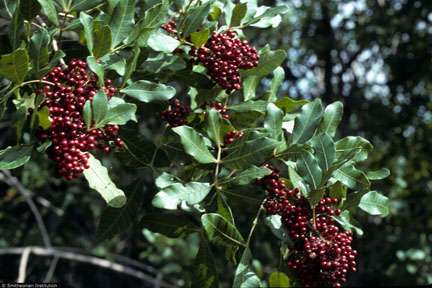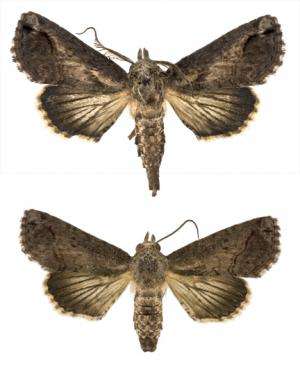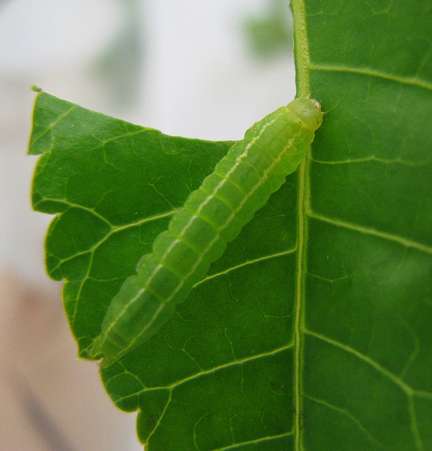Biocontrol research on Brazilian peppertree in Florida discovers new cryptic species

Dr Michael Pogue, a Research Entomologist in the ARS Systematic Entomology Laboratory, at the Smithsonian Institution, Washington, DC, was sent a series of moth specimens from Bahia, Brazil, for identification. The insects were under consideration as a possible biocontrol agent for the invasive Brazilian peppertree in Florida.
'The species was initially identified as a common species, but when comparisons were made, it became evident that there were multiple species involved' said Dr. Pogue. Using characters from the moths' male and female genitalia, Dr. Pogue determined that the so-called 'common' species actually consisted of six new species, plus two described species.

Brazilian peppertree is one of the most damaging invasive species in Florida. Originally introduced as an ornamental plant into Florida at least three times in the mid- to late 1800's, it has since invaded a number of habitats throughout southern and central Florida. In addition to this new biocontrol species, two other species (one new) native to Florida also feed on Brazilian peppertree. The potential biocontrol species had been described previously, but the remaining five new species were described in the present study in ZooKeys.
'What was interesting about this identification was the discovery of so many new species', said Dr Pogue. 'The wing pattern was similar among these species, but their reproductive systems were quite different'. 'It became obvious that multiple cryptic species were involved only when these dissections were made.'

Cryptic species complexes can be confusing and require proper careful assessment of morphological or molecular characters in order to allow for identifications.
More information: Pogue MG (2013) A review of the Paectes arcigera species complex (Guenée) (Lepidoptera, Euteliidae). In: Schmidt BC, Lafontaine JD (Eds) Contributions to the systematics of New World macro-moths IV. ZooKeys 264: 125–163. doi: 10.3897/zookeys.264.3274
Journal information: ZooKeys
Provided by Pensoft Publishers














